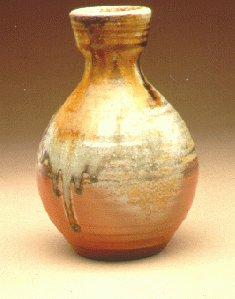Mark SkudlarekOne need not travel to the Far East to see and experience a working dragon kiln. The power of this myth is alive at Cambridge Wood-fired Pottery. Our kiln is a close relative of those ancient kilns and is fired four times a year. During the three-day process, nearly six chords of slab wood (a by-product of local saw mills) are consumed by the inferno which fires over four thousand pounds of pottery. The pottery workshop and showroom are located on an apple orchard just outside of Cambridge overlooking the rural Wisconsin landscape. From the mixing of clay to selling the finished product, you will have the unique opportunity to see where the pots are turned, fired and, finally, put on display. Whatever the job of the day maybe, we encourage you to pay us a visit and take with you the experience of being at a working pottery. The pots made at Cambridge Wood-fired Pottery are produced by the means of a labor-intensive process. They are beautiful and unique, but in spite of this, they remain very functional and affordable. The art of pottery is interactive and you participate: the creative process is made complete only when the pottery is finally used and enjoyed in your home. | 
|

|
Sam Taylor
I make wood fired stoneware pottery. All my pots are functional though I do make some pieces that are prettier to look at while other pieces are more rewarding to use. I make everything myself on a Leach or treadle style wheel. I like to throw pots on the wheel and then alter them, using a knife to cut facets or a paddle to change the form. I love to decorate or paint on the pottery too. In the studio I spend my time getting the pots ready to be fired. I try and make forms and decorations that will complement or in turn be complemented by firing them in the wood kiln. The process of firing our kiln with wood is exhilarating. The fire makes the kiln come alive -- but trying to control something that has a life of its own is intensely challenging. The fire reaches temperatures up to 2,300 degrees Fahrenheit and must be fed for 24 hours. A flame sometimes as long as 40' long flows through the kiln like a river overflowing its banks. None of the pottery is spared by the fire or by the ash and salt that are carried along with it. Each piece of pottery that comes out of the kiln has its own story to tell. Even two pots, practically identical and put in the kiln side by side, will be completely different from each other once fired. The first pots that I unloaded from the wood kiln were magical for me. What came out of the kiln was so much better then what I had put in; my simple, even `crude' pots had been transformed. Ten years later, I still get the same thrill unloading the kiln. Not only are no two pieces the same, but also through the magic of the kiln and the fire, the pottery is alive. |